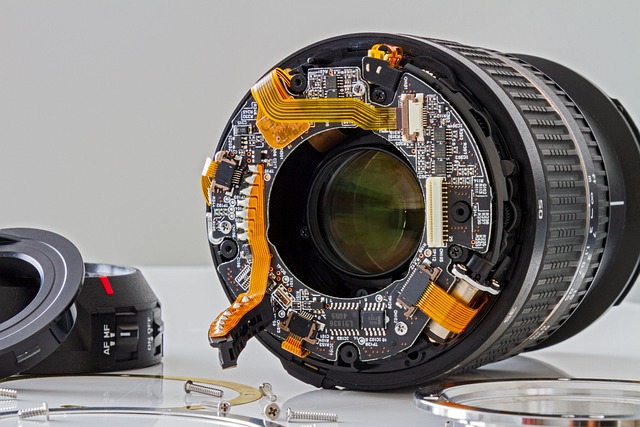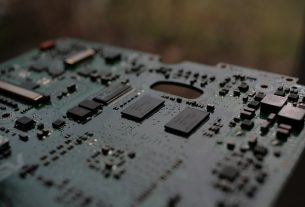When tackling home repair and maintenance projects involving appliance installation or maintenance, it's crucial to follow safety guidelines, manufacturer instructions, and local codes. Essential tools for the job include a screwdriver set, adjustable wrench, voltage tester, level, and plumber's tape measure. Proper understanding of the appliance's electrical and plumbing requirements is necessary to avoid issues like shorts or leaks. Prepare the installation site according to the appliance's size and operational clearance, ensuring a secure fit with attention to detail during setup. After installation, perform stability and functional tests to confirm everything is properly connected and operating correctly. Regular maintenance checks are vital for maintaining optimal performance and extending the life of your appliances, helping to prevent costly repairs and ensuring your home's appliances operate safely and efficiently. For ongoing care, understanding common issues like fridge door seal failures or washing machine vibration, and addressing them promptly, can save money and enhance the overall living experience. Professional advice is recommended for specialized maintenance, considering individual usage patterns and appliance features to tailor a home repair and maintenance plan that keeps all household appliances running smoothly. This proactive approach not only extends the lifespan of your appliances but also saves on repairs and contributes to a safer and more efficient home environment.
Navigating the intricacies of home repair and maintenance often includes appliance installation and upkeep. Whether you’re tackling a DIY project or seeking professional assistance, a solid understanding of the basics in appliance installation is paramount. This article delves into common issues and their solutions, ensuring your household appliances operate efficiently. Additionally, it provides expert guidance and tips for maintaining these critical components of modern living safely and effectively. With the right knowledge and approach, you can keep your home’s appliances in top working order, enhancing your daily comfort and convenience.
- Understanding the Basics of Appliance Installation for Home Repair and Maintenance
- Common Issues and Solutions in Appliance Repair for Efficient Home Maintenance
- Professional Guidance and Tips for Maintaining Your Household Appliances Safely and Effectively
Understanding the Basics of Appliance Installation for Home Repair and Maintenance

When embarking on home repair and maintenance projects that involve appliance installation, it’s crucial to have a solid understanding of the process. Homeowners should begin by carefully reviewing the manufacturer’s manual for specific instructions related to their appliance model. This step ensures adherence to safety guidelines and correct assembly procedures. Proper tools and equipment are necessary; these typically include a screwdriver set, adjustable wrench, voltage tester, level, and plumber’s tape measure. It’s also essential to understand the electrical and plumbing requirements for the appliance to avoid potential hazards such as electrical shorts or water leaks.
Once the site is prepared, with consideration given to the appliance’s size and clearance needed for operation, installation can proceed. Each connection, whether it be electrical or gas, must be made according to local codes and the manufacturer’s specifications. After securing the appliance in place and making all necessary connections, a final check should be conducted to confirm stability and that all utilities are functioning correctly. It’s imperative to perform these tasks with precision to ensure the appliance operates efficiently and safely. Regular maintenance checks are also vital for prolonging the lifespan of the appliance and preventing costly repairs in the future. Understanding the basics of appliance installation is a key component of effective home repair and maintenance, contributing significantly to the safety and functionality of your household appliances.
Common Issues and Solutions in Appliance Repair for Efficient Home Maintenance

When it comes to home repair and maintenance, appliance installation and repair play a pivotal role in maintaining an efficient household. Common issues that arise with appliances can range from simple malfunctions to complex system failures. To address these effectively, understanding the typical problems and their solutions is crucial for homeowners aiming to keep their living spaces functioning optimally.
For instance, refrigerators may cease to cool properly due to faulty door seals or malfunctioning thermostats. A thorough inspection of the door gaskets can reveal if they need replacement, thereby restoring the appliance’s cooling efficiency. Similarly, issues with washing machines often stem from clogged hoses, worn-out pumps, or imbalanced loads leading to excessive vibration. Clear obstructions in hoses, check for leaks, and ensure that laundry is evenly distributed to prevent damage and extend the appliance’s lifespan. Dishwashers might present with poor performance due to clogged filters or a lack of proper dish placement. Regular cleaning of filters and ensuring dishes are stacked correctly can mitigate these problems, fostering an environment where home repair and maintenance are proactive rather than reactive. Addressing common issues promptly not only saves time and money but also ensures that appliances operate safely and efficiently, contributing to the overall well-being of your home.
Professional Guidance and Tips for Maintaining Your Household Appliances Safely and Effectively

When it comes to maintaining your household appliances, professional guidance can be invaluable for ensuring they operate safely and effectively over their lifetimes. Regular maintenance is a cornerstone of home repair and maintenance, as it helps to extend the life of your appliances and prevents minor issues from escalating into costly repairs or replacements. For instance, cleaning the lint filter after every use can significantly reduce the risk of fire in your dryer, a common household hazard. Similarly, checking the water lines and connections of your refrigerator can prevent leaks and ensure consistent performance. Professionals often recommend scheduling yearly inspections for major appliances to catch wear and tear or potential problems early on. This proactive approach is key in maintaining the efficiency and reliability of your home’s appliances, thereby saving you time and money in the long run.
Moreover, understanding the specific models of your appliances allows for tailored maintenance practices. Manufacturers typically provide detailed user manuals with safety guidelines and recommended care instructions. Adhering to these guidelines as part of your home repair and maintenance routine is essential for maintaining warranty coverage and ensuring the longevity of each appliance. Additionally, professional technicians can offer personalized advice on how to best care for each appliance, taking into account factors like usage frequency, environmental conditions, and the unique features of your appliances. By combining manufacturer-specific guidance with regular maintenance checks, you can create a comprehensive home repair and maintenance plan that keeps all your household appliances running smoothly.
When maintaining and repairing household appliances, a clear understanding of the basics in installation is paramount for effective home maintenance. Common issues with these appliances can often be resolved with the right solutions, ensuring your home operates smoothly. It’s always advisable to seek professional guidance when dealing with such repairs to ensure safety and efficacy. By staying informed about the best practices for maintaining your appliances, you can extend their lifespan and enhance their performance. With the insights provided in this article on home repair and maintenance, you are now better equipped to handle appliance installation and repair confidently.



